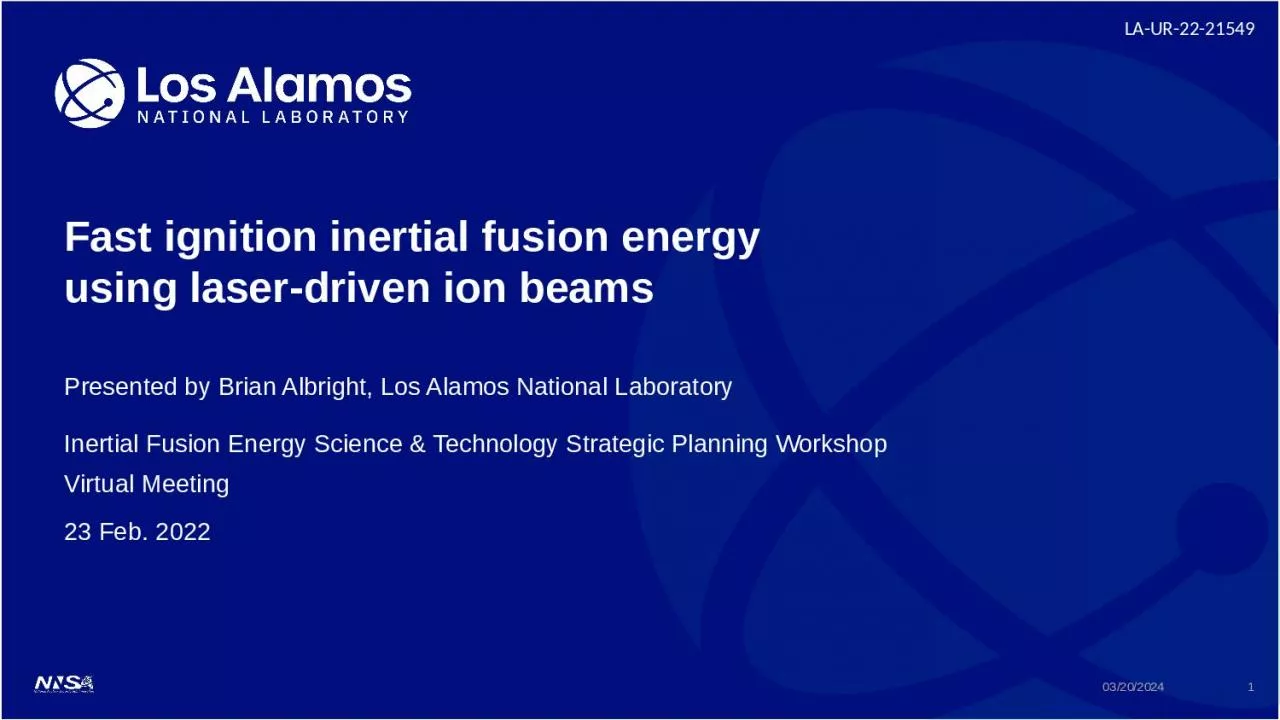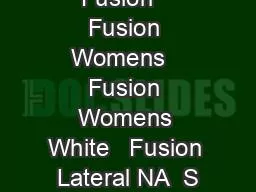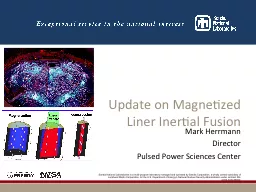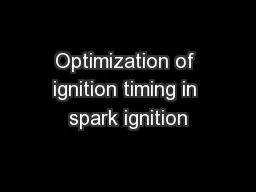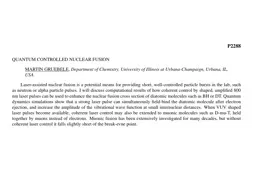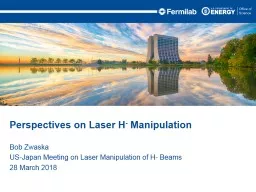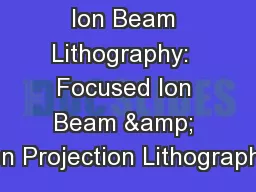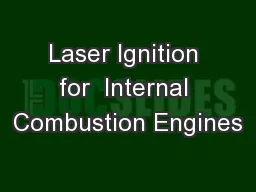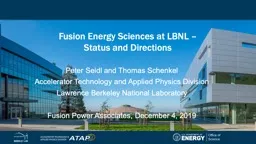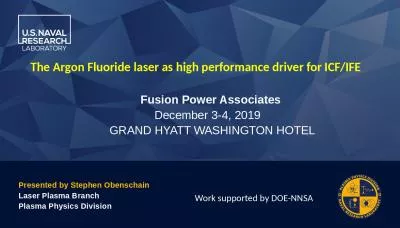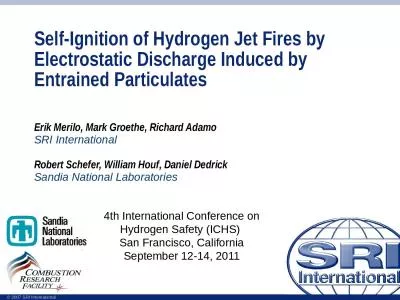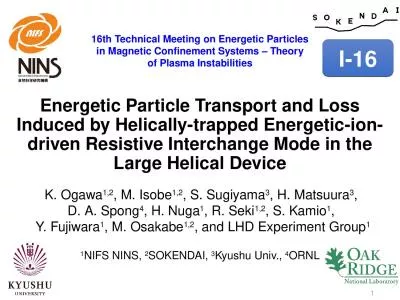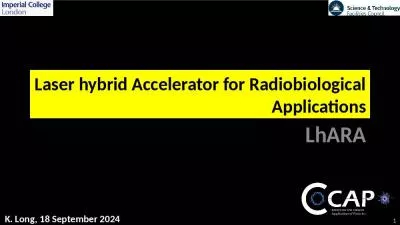PPT-Fast ignition inertial fusion energy using laser-driven ion beams
Author : brianna | Published Date : 2024-03-13
LAUR2221549 Inertial Fusion Energy Science amp Technology Strategic Planning Workshop Virtual Meeting 23 Feb 2022 Presented by Brian Albright Los Alamos National
Presentation Embed Code
Download Presentation
Download Presentation The PPT/PDF document "Fast ignition inertial fusion energy usi..." is the property of its rightful owner. Permission is granted to download and print the materials on this website for personal, non-commercial use only, and to display it on your personal computer provided you do not modify the materials and that you retain all copyright notices contained in the materials. By downloading content from our website, you accept the terms of this agreement.
Fast ignition inertial fusion energy using laser-driven ion beams: Transcript
Download Rules Of Document
"Fast ignition inertial fusion energy using laser-driven ion beams"The content belongs to its owner. You may download and print it for personal use, without modification, and keep all copyright notices. By downloading, you agree to these terms.
Related Documents

